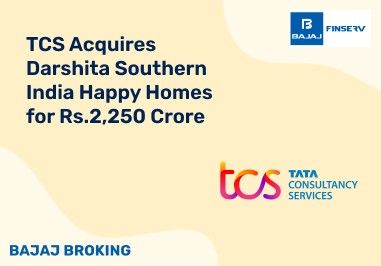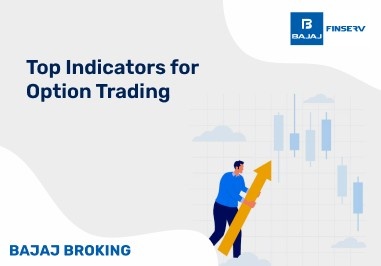BAJAJ BROKING
PDP Shipping & Projects IPO is Open!
Open a Free Demat Account
Trade Now, Pay Later with up to 4x
Track Market Movers Instantly
Union Budget: From 1947 to 2025
As India anticipates the unveiling of Modi Government 3.0 first full Union Budget 2024, the nation prepares to chart its financial course for the next fiscal year and beyond. In India, the Union Budget stands as more than just an annual fiscal statement; it serves as a pivotal roadmap that shapes the economic trajectory and policies of the country for years to come. Ahead of all the important announcements to be made in the upcoming budget, let us take a dip into its historical journey since independence. Giving you a fascinating glimpse into the evolution with a few interesting facts about the Union Budget:
The First-Ever Budget: Taxing Times with James Wilson
James Wilson from East India Company made history by presenting India's inaugural budget. This landmark budget not only introduced income tax, a cornerstone of government revenue ever since but also set the stage for centuries of fiscal policy.
The First Independent India Budget: Interim Intrigues with RK Shanmukham Chetty
The first independent India budget was an interim budget presented by RK Shanmukham Chetty, the then Finance Minister, on November 26, 1947. Since then, the government has presented 15 interim budgets, with the last one being presented by Nirmala Sitharaman in February 2024.
The Longest Budget Speech: Nirmala's Marathon Moment
The record for the longest budget speech is held by Nirmala Sitharaman for her budget speech on February 1, 2020. Her speech clocked in on 2 hours and 42 minutes, where she started at 11 and spoke till 1:42 p.m. Despite falling ill midway, she soldiered on until Speaker Om Birla stepped in to complete the remaining parts of her speech.
The Wordiest Budget: Singh's Verbal Veracity
Dr Manmohan Singh holds the record for the wordiest budget, totalling approximately 18,604 words presented in 1991 during the Narasimha Rao government. He is followed by Arun Jaitley, who delivered the budget speech in 2018.
The Shortest Budget Speech: Patel's Precise Presentation
Hirubhai Mulljhibhai Patel is known to present the shortest budget speech under the Morarji Desai government. His budget speech was just 800 words.
First Woman's Budget: Indira's Fiscal Frontier
Indira Gandhi was the first woman to present the budget for the financial year 1970–71. The budget marked a significant milestone in gender equality and governance. Her pioneering role shattered traditional barriers, demonstrating leadership and competence in shaping the nation's fiscal policies.
Digital Revolution in 2020–21: First Paperless Budget
Due to the severity of the COVID-19 pandemic, India embraced its first paperless budget for the fiscal year 2020–21, leveraging digital platforms to innovate amidst global challenges.
Some Interesting Changes in Budget Presentation
Over time, budgets have evolved from mere financial blueprints to comprehensive policy documents, influencing economies and societies worldwide. From traditional podium speeches to digital transformations, let’s unveil some intriguing shifts in governmental fiscal strategies and communication methods.
Change in Language: Bilingual Breakthrough
Since independence, the Union budget was exclusively presented in English until the pivotal 1955 annual budget. The 1955 budget made a significant change with the printing of the budget in both English and Hindi.
Change in Budget Presentation Time: Timely Transformation
The 2017 BJP-led government changed the budget presentation time to 11:00 a.m. on the first working day of February. This was earlier done at 5:00 p.m. on the last working day of February following the British convention. this was considered a bold move toward efficiency and modernization.
From Budget Briefcase to Bahi Khata: Fashioning Fiscal Tradition
Nirmala Sitharaman, being the second woman to present the budget, broke tradition by ditching the classic briefcase. Instead, she changed the tradition of carrying a budget briefcase and opted for Bahi Khata to hone her budget speech and related documents.
Integration of the Railway Budget: Tracks to Tandem
The railway and union budgets were presented separately until 2017. However, the same has changed, and the Railway Budget and Union Budget have been presented jointly ever since the integration of the Railway Budget.
Shifting in Budget Printing: Leak Lessons
Originally printed at Rashtrapati Bhawan until leaks prompted relocation to Minto Road in 1950, with further shifts to the North Block Basement post-1980, ensuring secrecy and security in fiscal document dissemination.
Iconic Budgets
India’s financial history unveils a tapestry woven with iconic budgets that have shaped nations and economies. These budgets are not just numbers on spreadsheets; they represent pivotal moments of decision-making that have impacted societies worldwide. Let's journey through some of the most intriguing and influential budgets that have left an indelible mark on the economic landscapes they sought to transform.
The Black Budget: Unveiling India's Fiscal Reality
Marked by a period of severe financial crisis, the 1973–74 budget presented by Yashwantrao B. Chavan is known as the “Black Budget''. It revealed the fiscal deficit to be somewhere around ₹550 crore. This budget not only laid bare the financial challenges but also set the stage for future fiscal reforms aimed at stability and growth.
Carrot and Stick Budget: Crushing the License Raj
To crush and transform India's License Raj, the 1986–97 budget introduced rewards as well as penalties. It was called the “Carrot & Stick Budget” and introduced several revolutionary measures like MODVAT and rigorous policies for tax evaders, smugglers, and other defaulters. This budget sparked a wave of economic liberalization and paved the way for a more competitive market environment.
The Epochal Budget: Pioneering Economic Liberalization
The 1991 budget, known as the Epochal Budget, called for India's economic liberalization. By reducing customs duties and initiating a comprehensive economic reform agenda, this budget transformed India's economic landscape and positioned it as a global player in the decades to come
Dream Budget: Fueling Economic Aspirations
The 1997-98 budget presented by P Chidambaram was referred to as the “Dream Budget”. This budget focused on lowering income and corporate tax rates while introducing initiatives like the Voluntary Disclosure of Income Scheme to combat black money. It also introduced schemes like the Voluntary Disclosure of Income Scheme to track black money and create a more transparent fiscal environment.
Millennium Budget: Driving IT Revolution
Yashwant Sinha's 2000 budget, known as the "Millennium Budget," catalyzed India's IT sector growth with strategic incentives and policies. This budget marked a pivotal moment in leveraging technology as a cornerstone of India's economic strategy for the new millennium.
Once-in-a-Century Budget: Reviving India's Future
The 2021 budget presented by Nirmala Sitharaman was termed the "once-in-a-century budget.”. Emphasizing infrastructure development, healthcare reforms, and innovative tax policies, this budget signalled a commitment to steering India towards sustained growth and resilience in the face of evolving global dynamics.
Union Budgets not only reflect the challenges and aspirations of their times but also underscore the critical role of fiscal policy in shaping India's economic destiny. From groundbreaking reforms to quirky traditions, each budgetary milestone offers a glimpse into the dynamic evolution of fiscal policy. The infamous "Black Budget" of 1973–74, the forward-thinking "Once-in-a-Century Budget" of 2021, each fiscal plan carries its own quirky moniker and a legacy of economic transformation.
As we look ahead towards a new budget due in a few days, these budgets serve as reminders of the resilience, innovation, and foresight needed to navigate future economic landscapes with agility and purpose.
Disclaimer: Investments in the securities market are subject to market risk, read all related documents carefully before investing.
This content is for educational purposes only. Securities quoted are exemplary and not recommendatory.
For All Disclaimers Click Here: https://bit.ly/3Tcsfuc
Share this article:
Read More Blogs
Our Secure Trading Platforms
Level up your stock market experience: Download the Bajaj Broking App for effortless investing and trading













